Incredible India - Remarkable Rajasthan
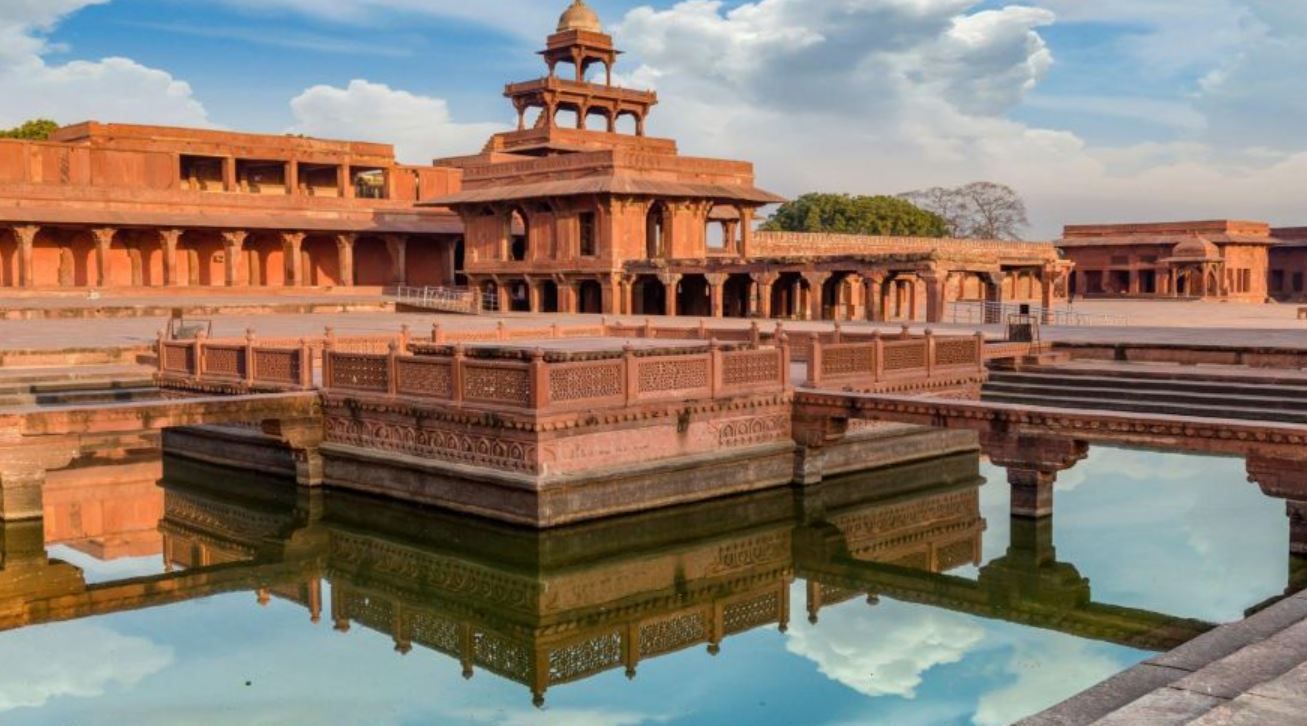
We spent a day travelling through part of Rajasthan - which translates to Land of the Kings - this state is home to maharajas, mighty forts and marvellous palaces.
As we left Agra though, maharajas and marvellous palaces were far from our minds as we stopped in one of the many villages lining the highway. The pharmacy was our first port of call - the pollution had flared up chest infections for some in our group, while others wanted various medications. Not me thank goodness!
From the collage below, you can see a cow joined the queue at the pharmacy, quite an ordinary occurrence in India! Despite the dusty paths, we marvelled at the spotless white shelves and the Chemist was knowledgeable.
Monkeys and pigs wander about, the streets chaotic, a couple of lads want their photo taken. We spotted the local butcher shop, but decided not to venture inside.
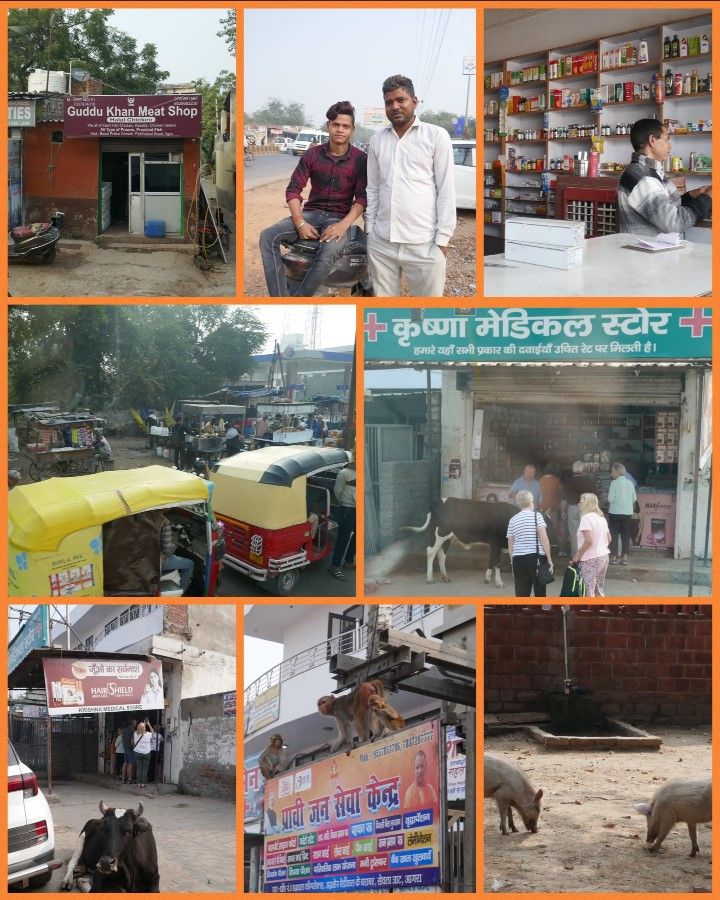
Back on the road, we visited Fatehpur Sikri - a deserted city now but once the capital of the Mughal empire between 1572 and 1585 and again built by Shah Akbar - his tolerant religious views and interest in literature, architecture and fine arts gives the buildings a tasteful blend of Islamic and Hindu elements in style and design. Scarcity of water led to the city being abandoned shortly after Akbars death.
Once again couples and families vie for photos with us.
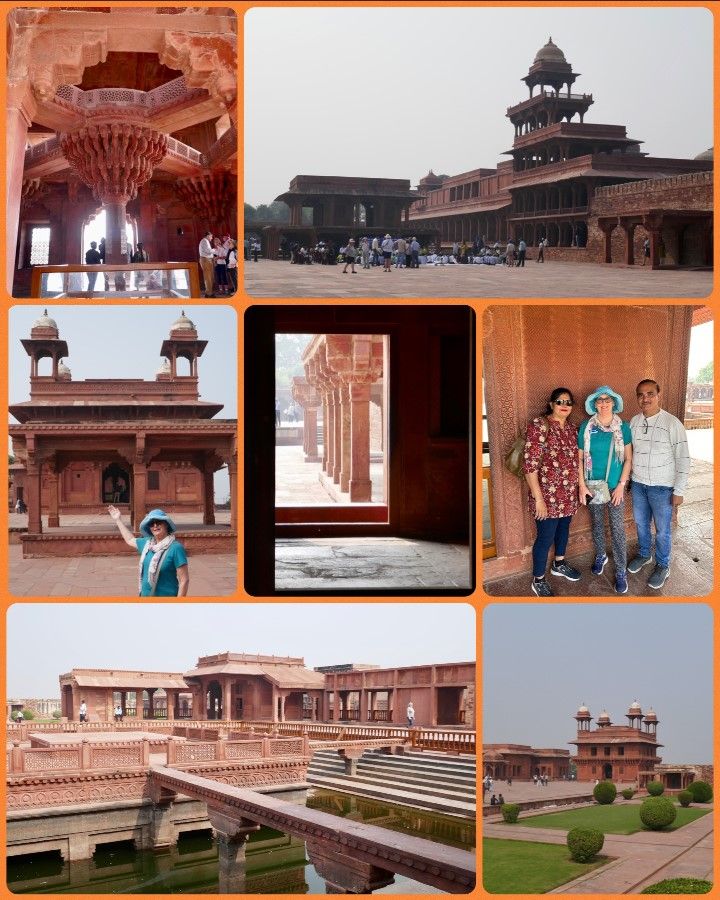
Our destination tonight was Samode - a small town not far from Jaipur, the capital of Rajasthan. We wondered why an overnight stop was scheduled here - but soon all was revealed! We were about to experience our first taste of how Maharajahs and Rajs would have lived, as we stepped into a world of Indian princes and princesses.
Driving through the unpretentious run-down village of Samode, we alighted the bus, greeted by locals and the odd camel as we walked along a dusty path. Turning the corner, in the early evening light, quite magical to see the magnificent facade of Samode Palace Hotel - previously the country home of a Raj.
We learned later that a wedding was to take place at the hotel in a few days time - the groom arriving at the hotel seated in an ornate howdah on the back of an extravagantly decorated elephant - what a sight that would be!
Elephants have always played a prominent part in Indian culture. They are considered to be very sacred and symbolize good luck and prosperity; hence they are usually a part of most Indian weddings. Elephants were a must at royal weddings in days gone by times.1
It should be noted that riding elephants at tourist attractions should be discouraged. Please seek out well-managed wildlife encounters that bring awareness and usually, greater protections for environments and animals.2
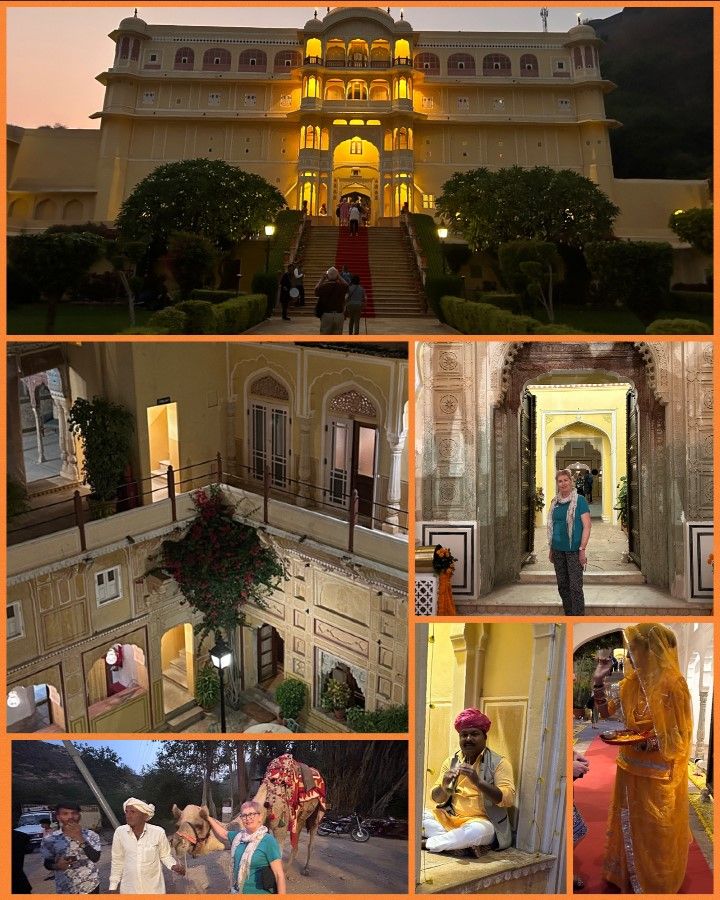
Samode Palace was built in the 16th century as a Rajput fort and in the early 19th century, converted into an exquisitely designed palace in Rajput and Mughal style.
The owner, Rawal Berisal was well connected and served as the chief minister of Rajasthan. Rawal Sheo Singh, his descendant, was prime minister of Jaipur State for several years during the middle of the 19th century and further expanded the Palace, adding Dunbar Hall and the equally stunning Sheesh Mahal. In 1987, it was converted into the heritage Samode Palace Hotel.
This ancient architectural style of Rajasthan is captivating, reminding me of the palace I visited in Sheki, Azerbaijan and the Persian mirror rooms in Tbilisi.
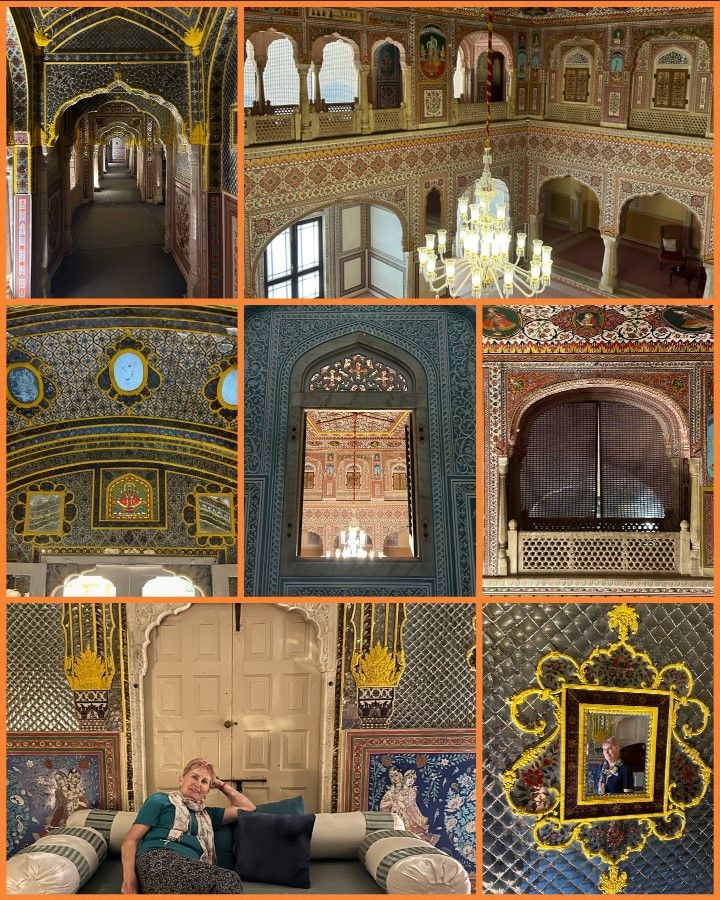
The next day we wandered through the village. Samode had been a rich town - today’s shabby buildings still retaining the elegant facades of yesteryear.
An artist, who painted miniatures on bay leaves started chatting to me, explaining some of the history, his family having lived here for a number of generations, his children all at college. The hotel now provides employment - an improved future for the village.
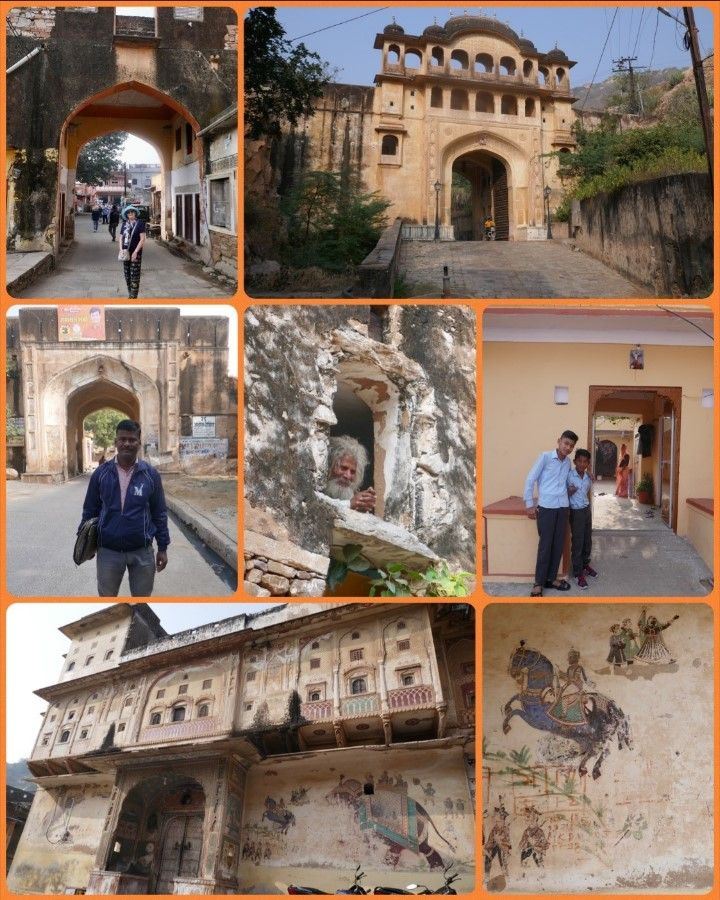
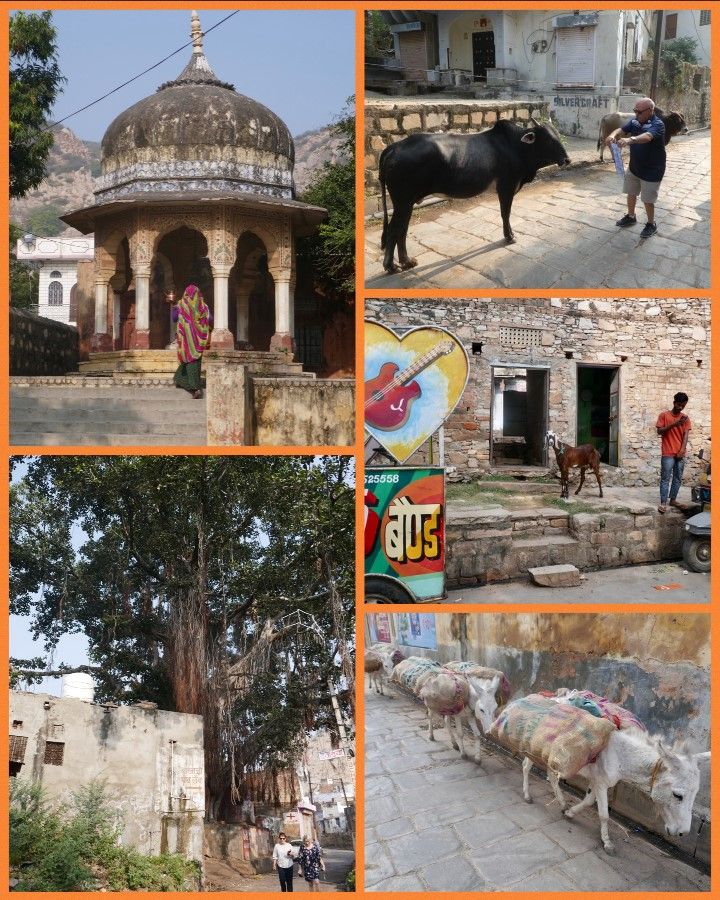
Seeing the Taj Mahal was amazing. Staying at the opulent Samode Palace, imagining being a princess was magical and chatting with the villagers, equally wonderful.
Join me tomorrow as we explore the Pink City of Jaipur.
Credits:
1. marrymeweddings.in
2. nomadasaurus.com
